
TVN Tech | Multiviewers Manage A Growing Juggling Act

As broadcasters transition to IP workflows, multiviewers must handle an increasing number of signals in a variety of formats.
Multiviewer technology has been around for a couple of decades, and broadcasters are thinking about price, reliability and ease of use and maintenance as they begin to replace older multiviewers. Vendors are making available traditional, hybrid and IP multiviewers to meet varying broadcaster needs.
No matter which style of multiviewer they select, the system needs to be able to handle and monitor many different formats and high numbers of input and output signals. Looking to the future, vendors expect to see advances in virtualization, compression and resolution technologies.
Todd Riggs, product manager for connectivity at Ross Video, says the first wave of multiviewers that were installed between 2000 and 2010 are coming up for a refresh. “The multiviewer is how you monitor what’s going on. It’s the eyes into the operation, if you will,” he says.
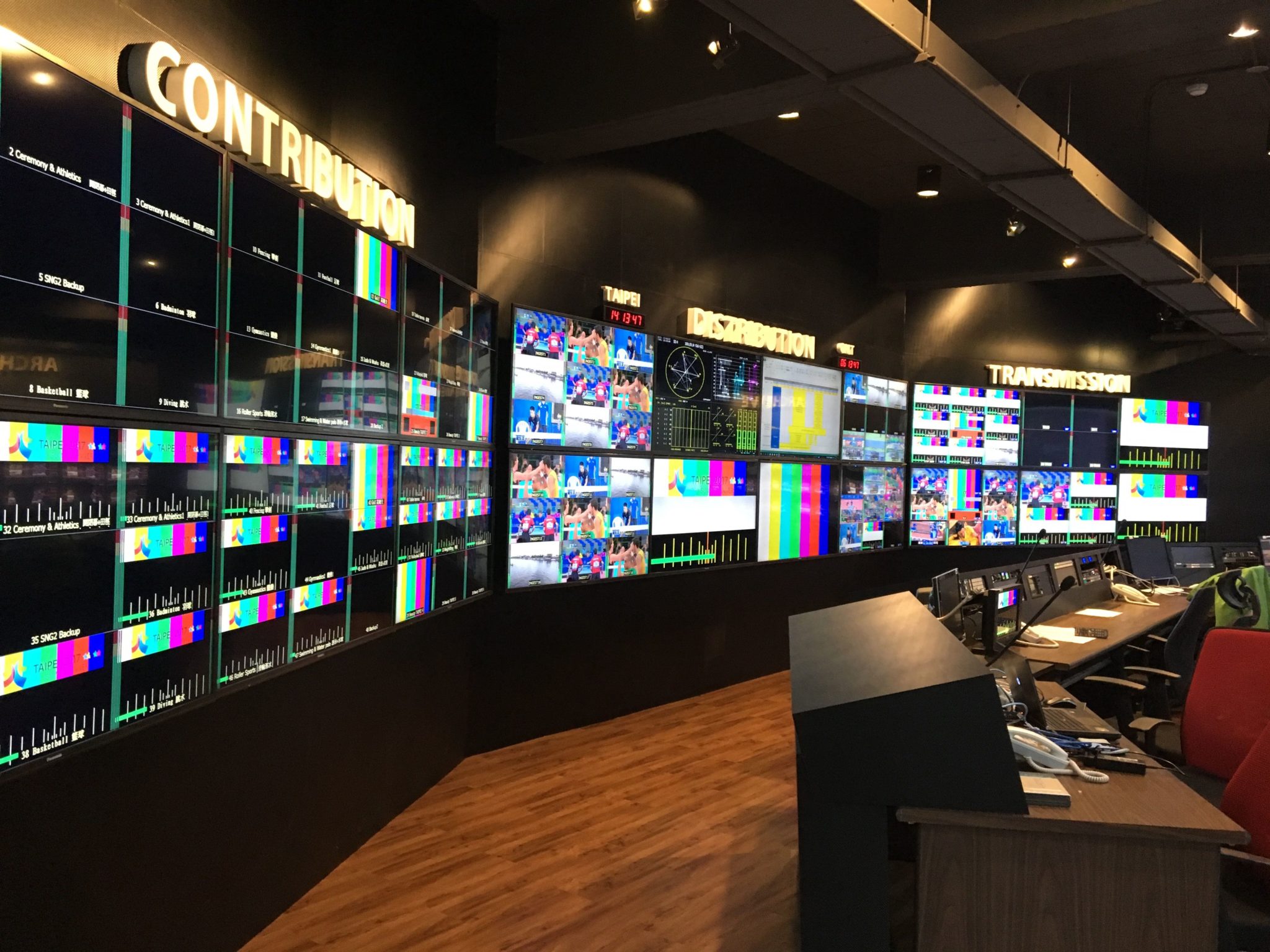
Apantac’s signal control center for the Universiade (World University Games).
Merely putting multiple pictures onto a screen doesn’t make something a broadcast-quality multiviewer, says Thomas Tang, president and founder of Apantac. Instead, it’s “all the interfaces with third-party equipment” such as the switchers and routers, and the ability to sound alarms and handle different signal types and formats that “make it a complete multiviewer.”
Because of the role multiviewers play in broadcast workflows, says Andrew Gong, business development specialist at Avitech International, customers have expressed concern about pricing and reliability as well as ease of maintenance and use. Multiviewer systems that have removable card slots ensure that if one card has an issue the whole system won’t go down, which Gong says is preferable to having to de-rack an entire unit and send it back to a vendor.
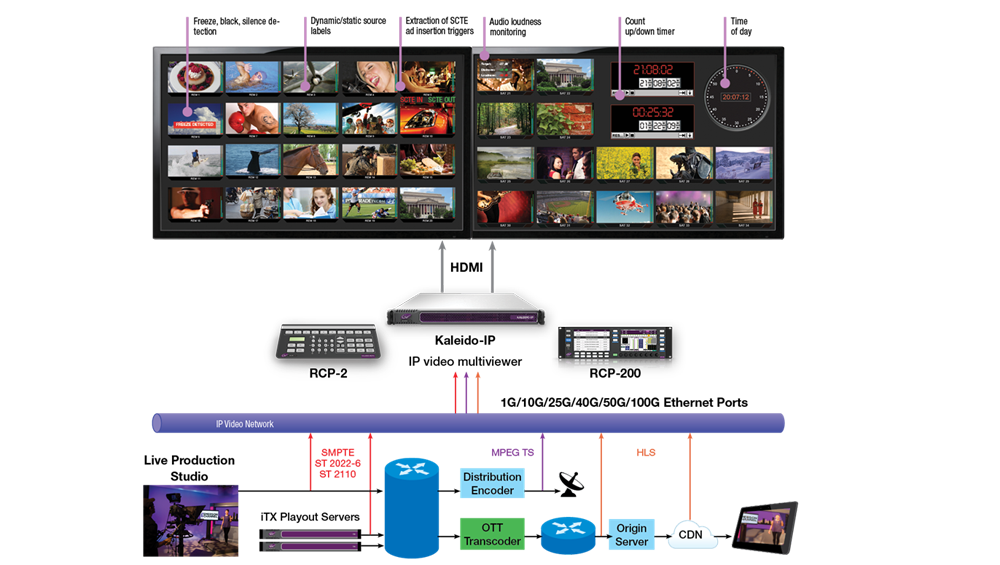
In the last year, Grass Valley’s Kaleido-IP multiviewer added a 50% increase in its inputs capacity, as well as a 100% increase in outputs. This makes it possible to replace the industry standard Kaleido-X multiviewer with the Kaleido-IP software based multiviewer that takes up a quarter of the space without any compromise on the feature set.
Martin Jolicoeur, director of product management at Grass Valley, says more people want to see sources at the same time on the multiviewer, which “triggers a need for more input/output capacity.” In the last year, Grass Valley increased input by 50% and doubled output on its Kaleido multiviewer, he says.
At the same time, increasing input and output creates a very high demand in terms of bandwidth on the compute platform.
As Andreas Hilmer, Lawo’s director of marketing, puts it: “You can easily consume the bandwidth of your installation just with the multiviewer.”
Important to consider is the architecture of the multiviewer, or, as Hilmer calls it, the technology behind the screen. “That has significant impact, which needs to be taken into account to assure the flexibility for the future of the infrastructure,” he says.
Some broadcasters are still seeking traditional multiviewers while others want to begin moving into an IP environment and are choosing systems that are capable of supporting hybrid or full IP operations.
Riggs says some are committed to baseband architecture “for very valid reasons,” while others are committed to IP architecture, “again for very valid reasons. There is no one-size-fits-all for this.”
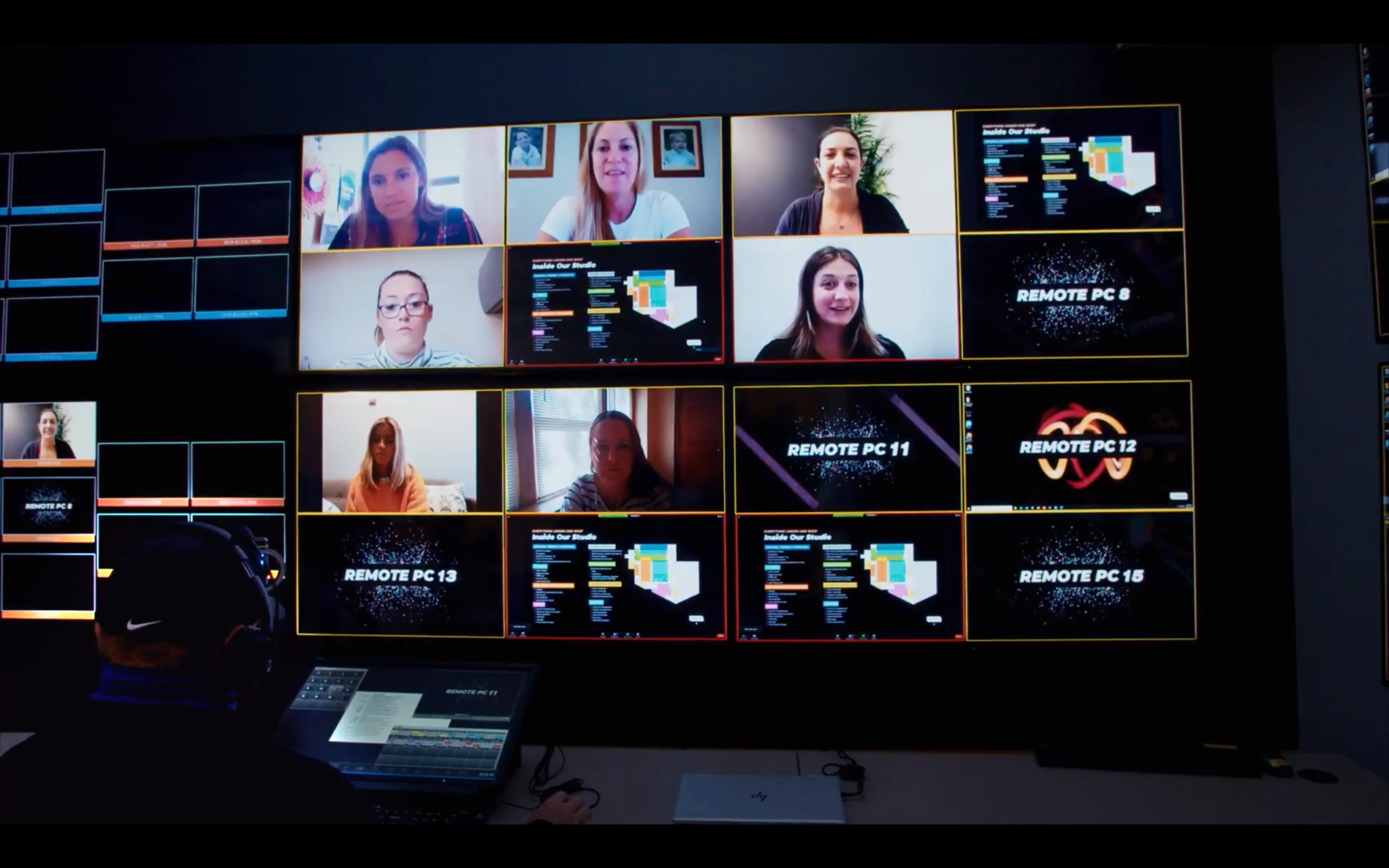
With Multiview KVM (keyboard video mouse), monitoring and control of multiple sources is easy — in this communication center, moving the mouse cursor from the Remote PC 11 window to the Remote PC 12 window will switch mouse and keyboard control from Remote PC 11 to the Remote PC 12. (Source: Avitech)
Ketan Patel, product manager for multiviewer systems at Evertz, says it’s important that broadcasters keep in mind that some functions are best carried out on dedicated hardware, while others can perform well in a software environment. For uncompressed IP signals, he says, hardware can perform better than software on its own.
Last year, Evertz launched its ev670-x30-HW generic hardware that requires minimum shelf space and investment, but can run different software, he says.
Christopher Shaw, Cobalt’s EVP for sales and marketing, says developing an IP-ready multiviewer is on the company’s roadmap. “At the moment, we can talk to broadcasters and truck builders, and they want to talk about 2110 and IP, but it’s not a deal killer at the moment, what we have to offer,” he says.
Satoshi Kanemura, president of FOR-A Corp. of America, says many broadcasters find themselves living in a hybrid environment. “The SDI to IP conversion isn’t going to happen overnight,” he says, and as they convert infrastructure to the IP world, they also have to think about things like security and avoiding hacking.
Kanemura says the company’s new MV-1640IP multiviewer “makes it easy to live under the SDI-IP world.”
Tang says Apantac offers transitional devices to help broadcasters move from traditional SDI operations to IP. Transition projects have been slower in the last year, partly due to COVID-19 social distancing requirements, but also due to worldwide components and materials shortages affecting most industries, he says.
Semiconductors, once on a four-to-eight-week lead-time now are taking 16-22 weeks, he says. Even the recent hard freeze in Texas has had an effect, he says, as plastics and foam used as for packaging and shipping materials are derived from the petroleum industry and prices for those items have increased.
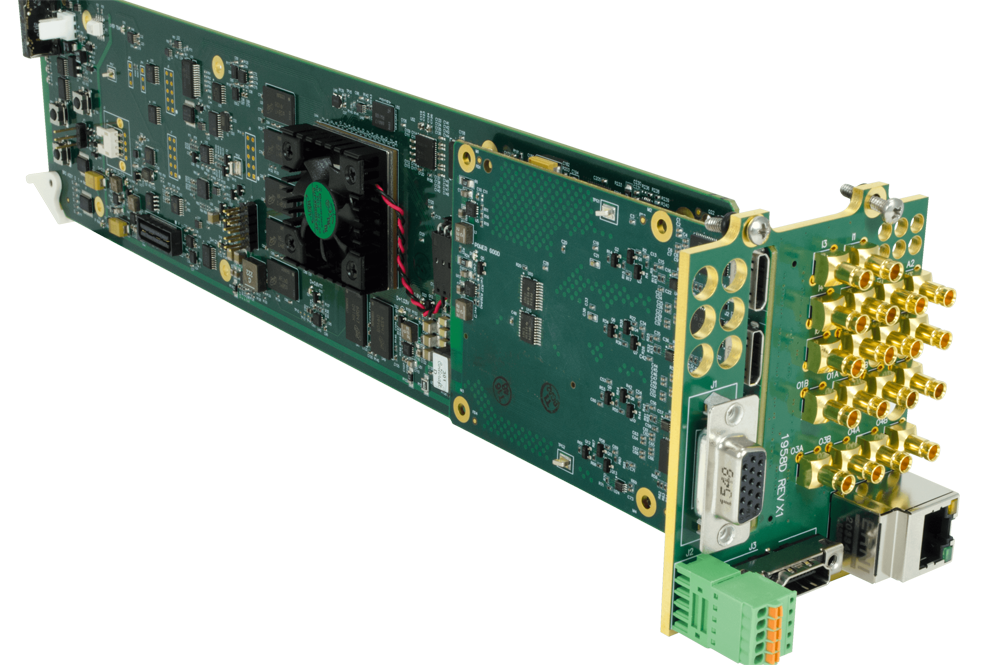
Cobalt’s 9971-MV18-4K high-density open gear UHD multiviewer.
One of the IP-related trends Jolicoeur points to is the demand for interoperability between devices from different manufacturers. The technology for IP multiviewers is available, he notes, so the next step is to make use of the flexibility that IP operations can provide.
“The way we’re achieving that is by virtualizing all the processes,” he says. “One day a box can be a multiviewer, and another day it can be another type of audio-video processer, depending on the demands of the product.”
Bespoke hardware multiviewers can be difficult to virtualize, he adds, but those with a software foundation are more flexible.
In mid-April, Grass Valley announced that Florida-based GOL TV was using the Kaleido-IP video multiviewer, along with other Grass Valley products, in the bilingual soccer channel’s newly upgraded mobile fleet and studios.
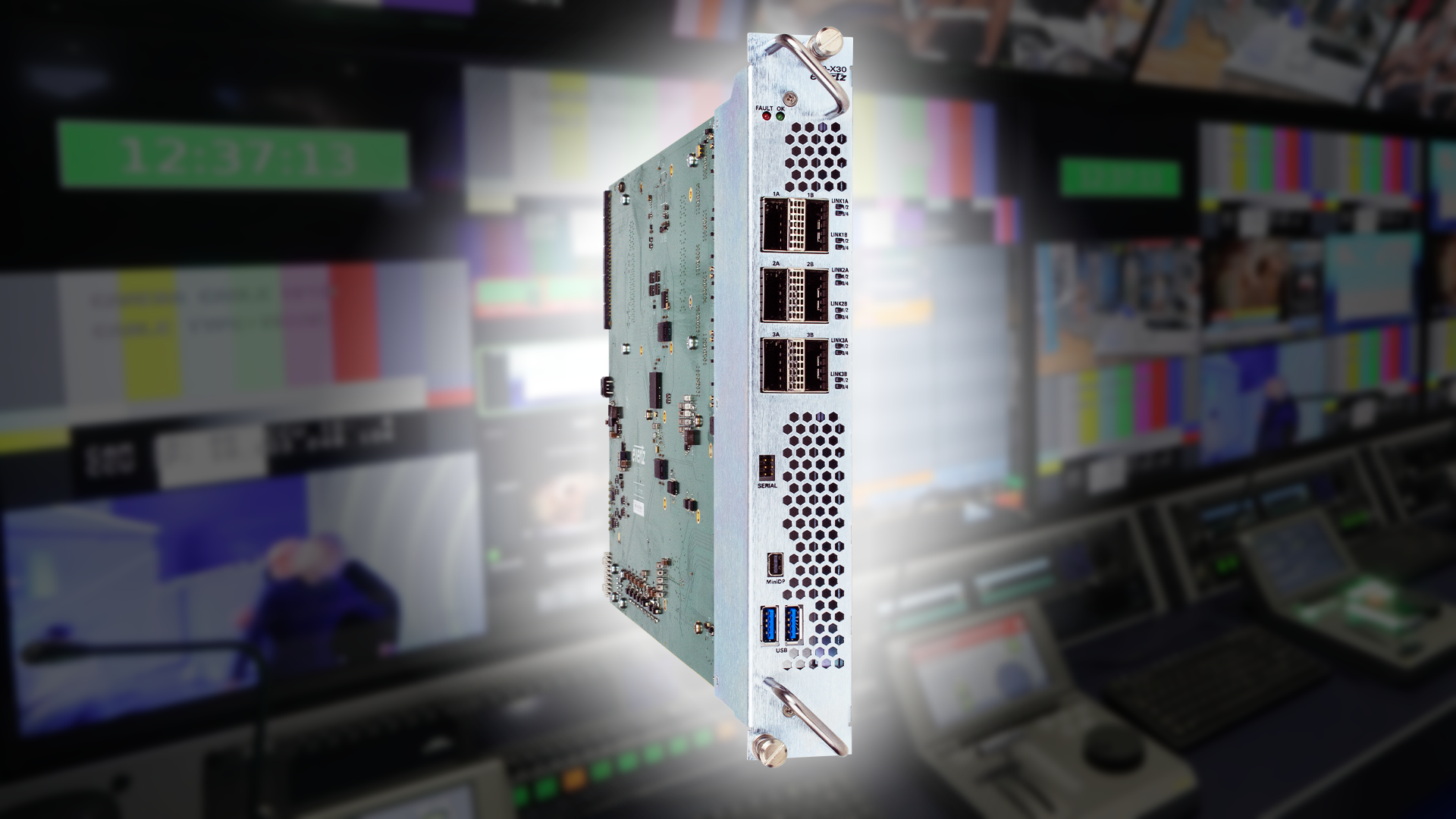
The Evertz ev670-x30-HW is an FPGA accelerated virtualized media processing platform that supports applications capable of up to 32×8 12G-SDI multiviewer, 64×8 3G or 16x8UHD uncompressed (ST-2110) multiviewer, or high density 32×32 3G-SDI (or 16×16 12G-SDI) to ST-2110 gateway.
Ciarán Doran, director of marketing of broadcast and media at Rohde & Schwarz, says the industry is definitely moving toward more virtualization and software-based platforms. The company’s PRISMON multiviewer and monitoring platform makes it possible for customers to see “the monitoring of signals in a visual way and a technical way” whether on-prem or remotely, even with thousands of signals moving through the system.
The software allows “total flexibility for a broadcast station,” Doran says. Broadcasters save money because they “buy [only] the licenses they need, not the ones you need for insurance purposes.”
Pinky Maron, VP professional services at TAG, says that as the industry shifts toward the cloud workflows, “the multiviewers are required to be cloud-friendly for the traditional transport and delivery applications.”
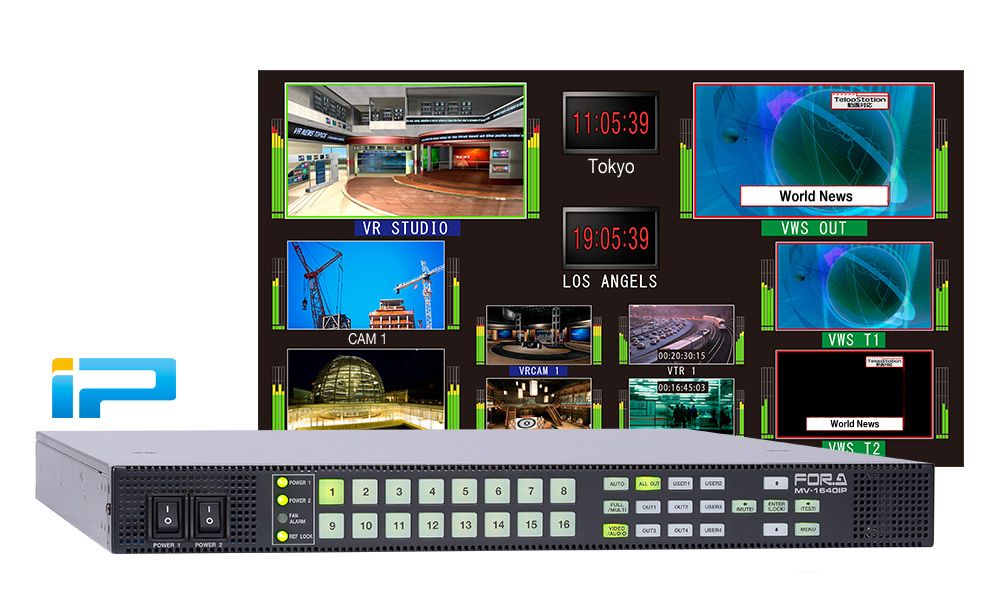
FOR-A Corp. of America’s new MV-1640IP multiviewer is designed for IP or hybrid production workflows.
Cloud IP protocols like Zixi, SRT and RIST, as well as compression technology, are enabling the move to the cloud, Maron says. “When you concentrate on the broadcast trends for multiviewers, the trend is to move the production and post-production to the cloud, so obviously you need to move the multiviewer to the cloud as well.”
Gong says he expects to see further developments in compression technology.
“They’re figuring out how to compress images more effectively,” he says, citing Netflix’ release last year of a 4K channel. “That’s a reflection of the compression techniques and how effectively they can shrink the size of the file so they can have more info per whatever amount of space they have to send.”
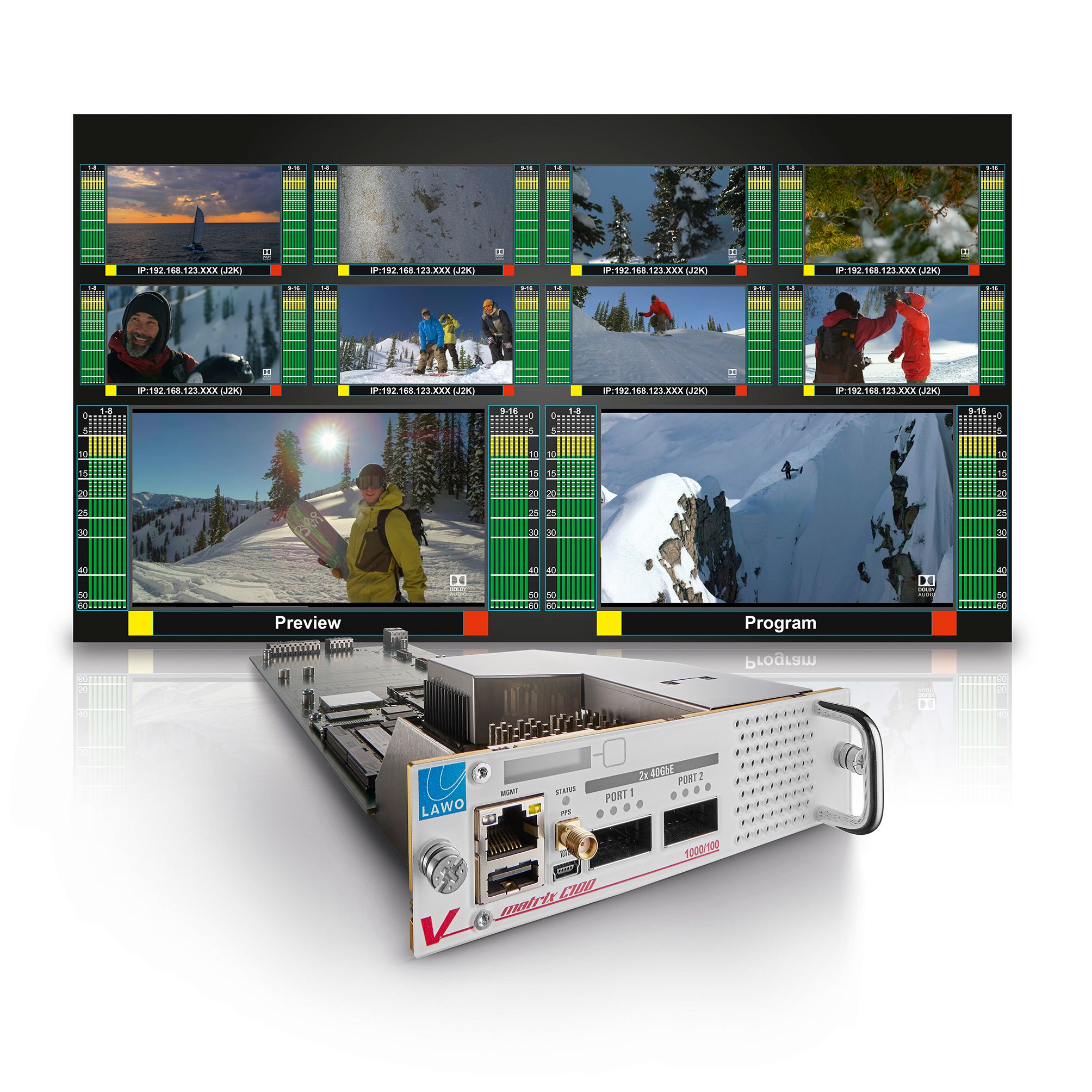
Lawo’s V matrix DMV Distributed IP Multiviewer is based on a networked cluster of C100 processing blades, allowing for infinite scalability with minimum bandwidth requirements.
Further advances are likely in resolution, he adds. Right now, Gong says, when a 1080p screen splits to display four screens, each of those smaller screens is a fourth of the original resolution, which is “pretty blurry.” Higher resolutions like 4K screens make multiviewing “a lot more effective.”
With the expectation that 8K and greater resolutions are on the way, he says, the clarity will remain even on the smaller windows. “You can see things better and more crisply.”


































Comments (0)